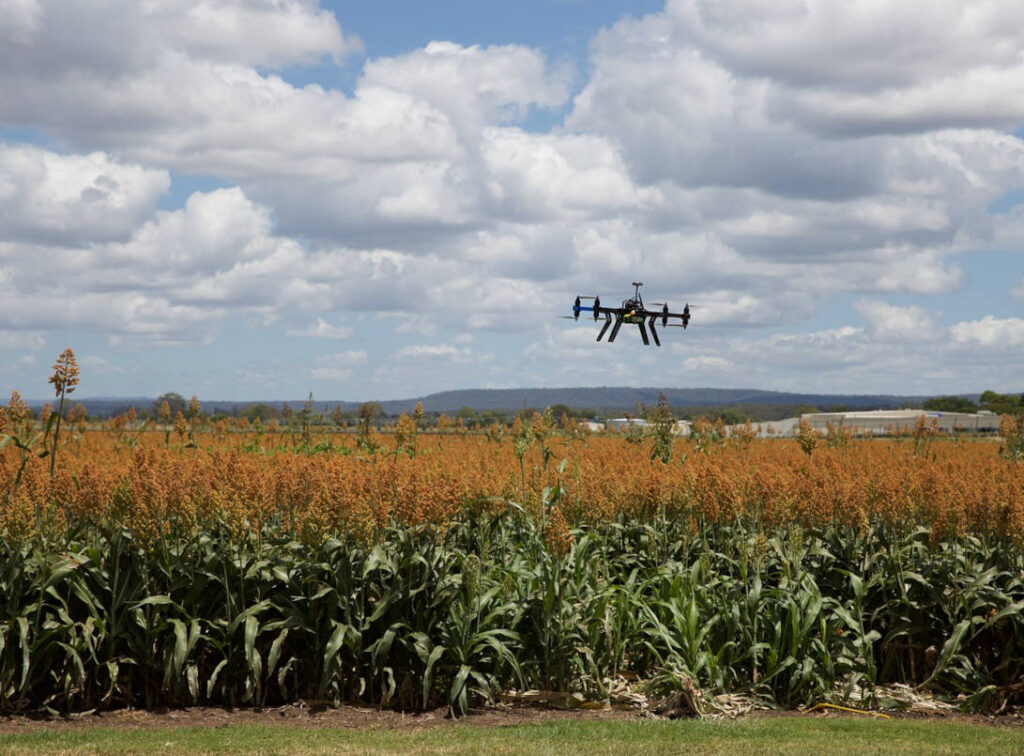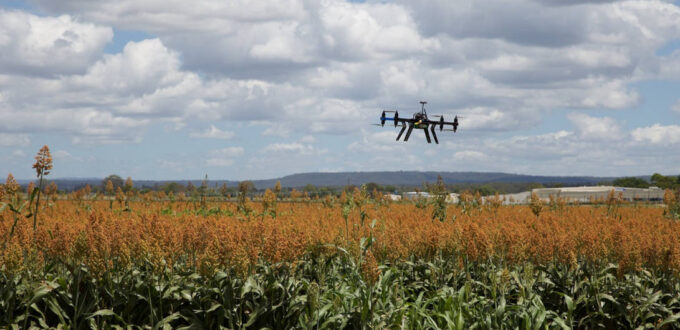
As an emerging technology, artificial intelligence (AI) offers a lot of potential – as well as risks – for Australia’s agricultural sector.
This article details three ways to harness AI that could transform your farming operations.
How demands on farmers are changing
According to the United Nations (UN), the global population will reach 9.8 billion by 2050. Moderate-to-severe food insecurity already challenges one in three people. The UN estimates more than 600 million people will face hunger in 2030. So how will we feed everyone?
Add to that shrinking water resources and, in Australia, a continuing decrease in the agriculture workforce. Australia’s university deans of agriculture argue the sector needs to become an employer of choice for potential workers or it will be without a workforce. This is a sector that punches above its weight, producing enough food for 75 million people, 70% of which we export.
Could AI help and reframe agriculture as technology-rich, and offer well-paid, interesting jobs? A way to boost productivity and water efficiency, while saving costs? It’s also a handy way to deal with our changing climate. AI’s foray into ag even has a name – the fourth agricultural revolution.
AI is being harnessed not just for precision agriculture, remote sensing, robotics, apps, drones, and big data, but also to tap into indigenous knowledge and understanding. For example, the CSIRO and technology company Wipro say AI-powered tech could boost productivity if used for:
- Harvesting
- Seeding
- Soil tillage and monitoring
- Crop monitoring, yield prediction, and forecasts
- Disease diagnosis
- Weed and pest removal
- Chemical application, including fertilisers, herbicides, and pesticides,
- Data analytics to improve prediction.
Monitoring livestock health
One of the most promising AI applications is to allow farmers to check on livestock health (and maybe location) in real-time. This can be done autonomously and remotely with camera-enabled drones.
Tech, such as CattleEye, use machine learning and artificial intelligence to detect unusual cattle behaviour and those giving birth. It also scans for environmental conditions, checking on feed, so can help direct farmers to more verdant areas to boost cattle well-being and milk production.
When you factor in the cost of a lame cow to your operations, this tech has shown it can improve efficiencies and reduce your carbon footprint.
Other drone tech can count stock, and soon possibly muster sheep or cattle. Sheep facial recognition, anyone? That’s an application of AI, to match lambs with ewes to identify the best producers.
Intelligent pesticide application
Manual pesticide application may be precise but it’s time-intensive. Meanwhile, automated application processes can do the job quicker but may be less accurate, so more prone to contaminating the environment.
Using computer vision to work out how much pesticide to spray, AI-powered drones are providing game-changing technology. One farmer reduced his chemical use by 80% thanks to robots that can zero in on tiny weeds that are easy to miss by the naked eye.
Crop yield predictions
AI, machine learning and big data can help take out some of the guesswork about price fluctuations. Drawing on satellite imagery and weather information means this tech can, in real-time:
- Assess farmlands
- Monitor crop health, such as through hyperspectral imaging and 3D laser scanning
- Detect disease and pest infestation
- Estimate crop output and yield and forecast prices, such as for tomatoes, which typically has unstable pricing
- Guide farmers and governments on price trends and patterns
- Offer evidence-informed approaches on demand level, crop types to sow to optimise benefits and pesticide applications, etc.
Learn how AI helps track bees to build a picture of pollination behaviour over a farm, or check out CSIRO’s Graincast platform.
The last word
These applications are useful and needed for agriculture, but don’t let your guard down about the risks. Researchers have raised concerns about the ‘big data’ agribusinesses collect and how they use that for their pricing.
When opting into AI-powered tech, ask the rep about their data collection, storage, usage, and deletion policies. As well, relying on internet connectivity for your operations means you’ll need strong cybersecurity practices and protection.
Be agile with your risk management. When you invest in new tech and business processes, get in touch with us. We’ll ensure your policy is updated so your sum insured is correct and your insurances are adequate to cover any new risks, including cyber insurance. Speak with Austbrokers Terrace.











